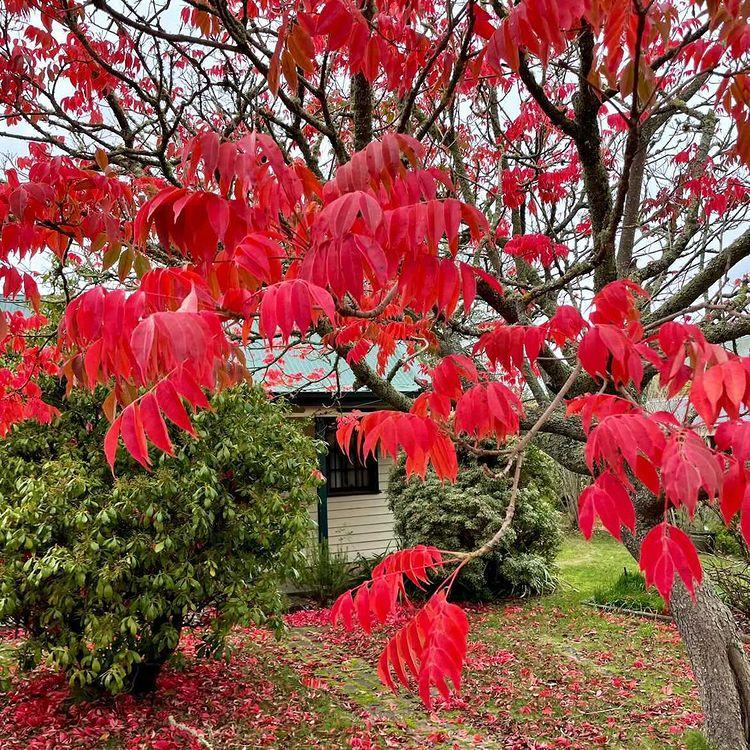Rhus succedanea
Credits
Article from Bean's Trees and Shrubs Hardy in the British Isles
Recommended citation
'Rhus succedanea' from the website Trees and Shrubs Online (treesandshrubsonline.
Genus
Common Names
- Wax Tree
A deciduous tree up to 30 or 35 ft high. Leaves pinnate, up to 1 ft in length; leaflets usually nine or eleven but sometimes as many as fifteen, ovate-oblong (often obliquely so), narrowed to a long point, not toothed, 2 to 41⁄2 in. long, 5⁄8 to 11⁄4 in. wide, shortly stalked, glabrous on both surfaces. The midrib usually runs nearer one side of the blade than the other and from it proceed, almost at right angles, ten to twenty pairs of thin veins. The leaves have a glossy, often purplish hue. Flowers very small, yellowish, produced in slender panicles 3 to 5 in. long that come in the crowded leaf-axils near the end of the shoot, the whole forming a thick cluster of blossom there. Fruits 3⁄8 in. broad, globose to rather kidney-shaped, borne in pendulous clusters, the seed and its waxy covering enclosed by a thin, smooth, yellowish-brown skin.
A species of wide distribution, from the Himalaya to Japan, Formosa, and Malaysia. In Japan it used to be much cultivated in the southern islands for the sake of the wax or tallow obtained from the fruits. This wax was used for making candles and was a principal source of artificial light in Japan until the importation of petroleum from America and Russia. Seeds appear to have first been introduced from Japan to France in 1862. It is scarcely hardy at Kew although it may survive for several years in a sheltered place. The leaves of plants grown in pots open with a pale bronzy tint and turn a lovely soft red colour before falling, and the species will no doubt be well worth cultivation in our warmer counties for its autumnal beauty.

